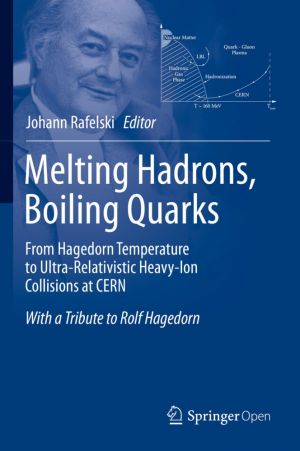- Регистрация
- 27 Авг 2018
- Сообщения
- 39,703
- Реакции
- 619,724
- Тема Автор Вы автор данного материала? |
- #1

This book shows how the study of multi-hadron production phenomena in the years after the founding of CERN culminated in Hagedorn's pioneering idea of limiting temperature, leading on to the discovery of the quark-gluon plasma -- announced, in February 2000 at CERN.Following the foreword by Herwig Schopper -- the Director General (1981-1988) of CERN at the key historical juncture -- the first part is a tribute to Rolf Hagedorn (1919-2003) and includes contributions by contemporary friends and colleagues, and those who were most touched by Hagedorn: Tamás Biró, Igor Dremin, Torleif Ericson, Marek Gaździcki, Mark Gorenstein, Hans Gutbrod, Maurice Jacob, István Montvay, Berndt Müller, Grazyna Odyniec, Emanuele Quercigh, Krzysztof Redlich, Helmut Satz, Luigi Sertorio, Ludwik Turko, and Gabriele Veneziano.The second and third parts retrace 20 years of developments that after discovery of the Hagedorn temperature in 1964 led to its recognition as the melting point of hadrons into boiling quarks, and to the rise of the experimental relativistic heavy ion collision program. These parts contain previously unpublished material authored by Hagedorn and Rafelski: conference retrospectives, research notes, workshop reports, in some instances abbreviated to avoid duplication of material, and rounded off with the editor's explanatory notes.About the editor: Johann Rafelski is a theoretical physicist working at The University of Arizona in Tucson, USA. Born in 1950 in Krakow, Poland, he received his Ph.D. with Walter Greiner in Frankfurt, Germany in 1973. Rafelski arrived at CERN in 1977, where in a joint effort with Hagedorn he contributed greatly to the establishment of the relativistic heavy ion collision, and quark-gluon plasma research fields. Moving on, with stops in Frankfurt and Cape Town, to Arizona, he invented and developed the strangeness quark flavor as the signature of quark-gluon plasma.
DOWNLOAD:


